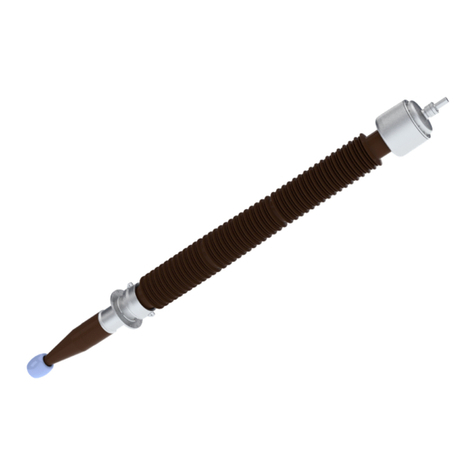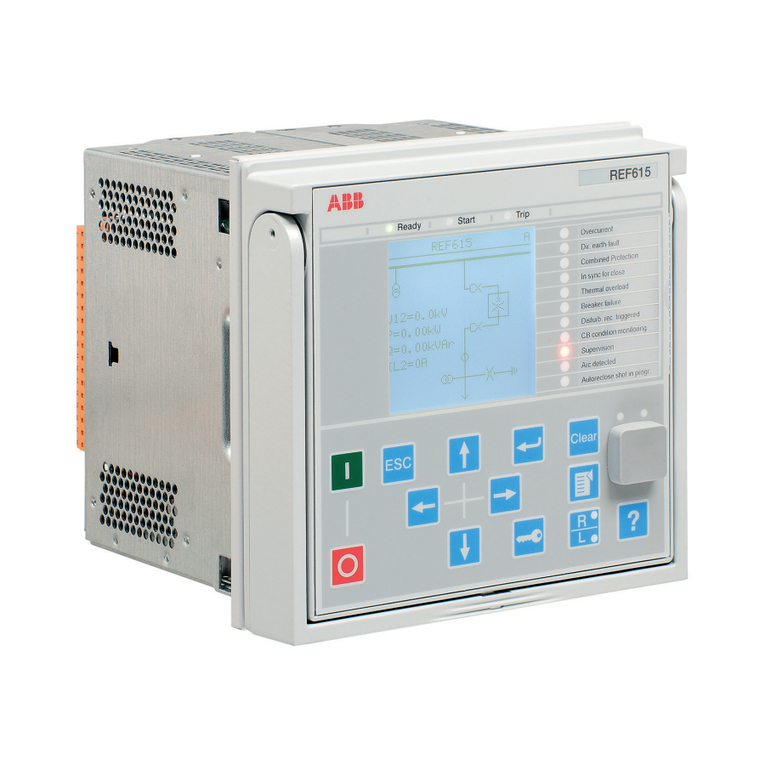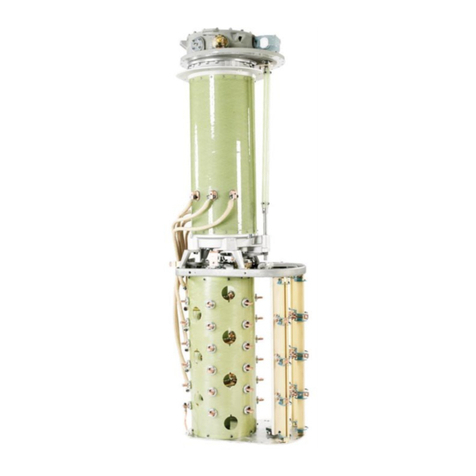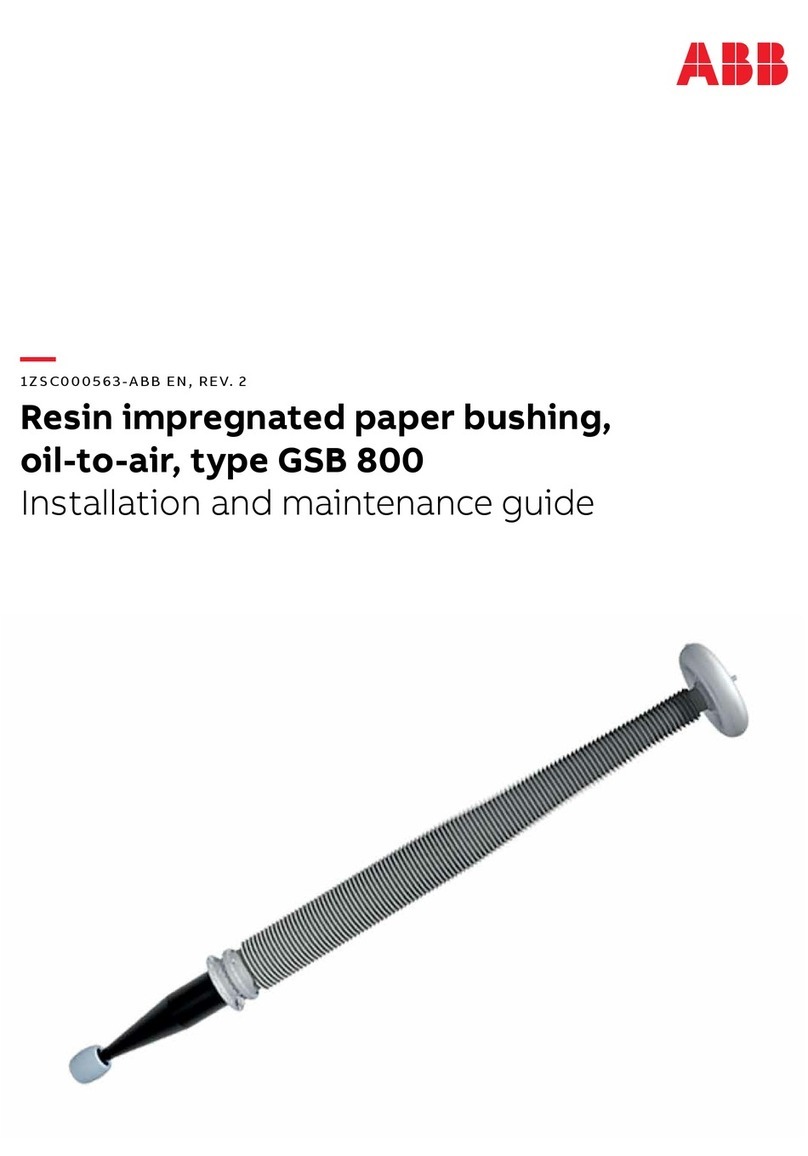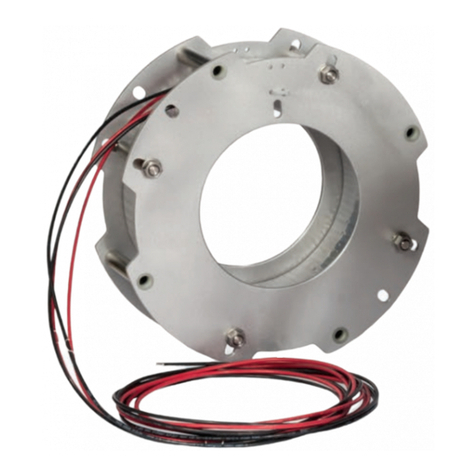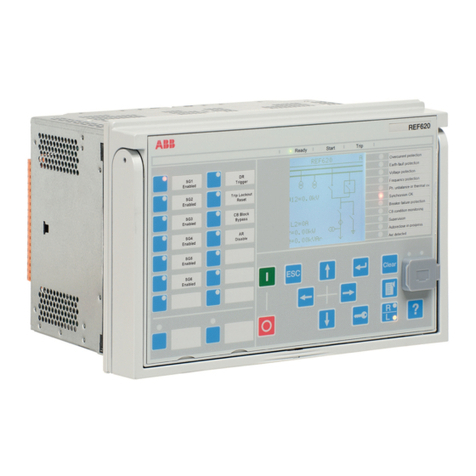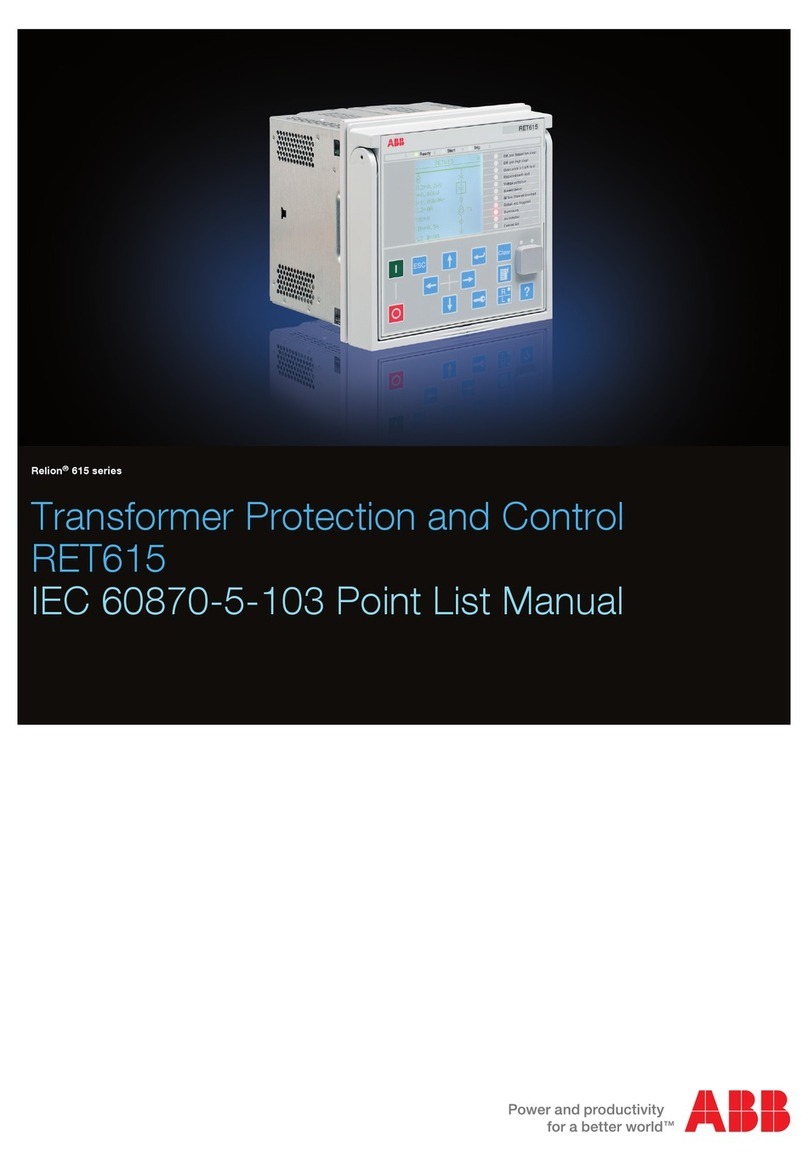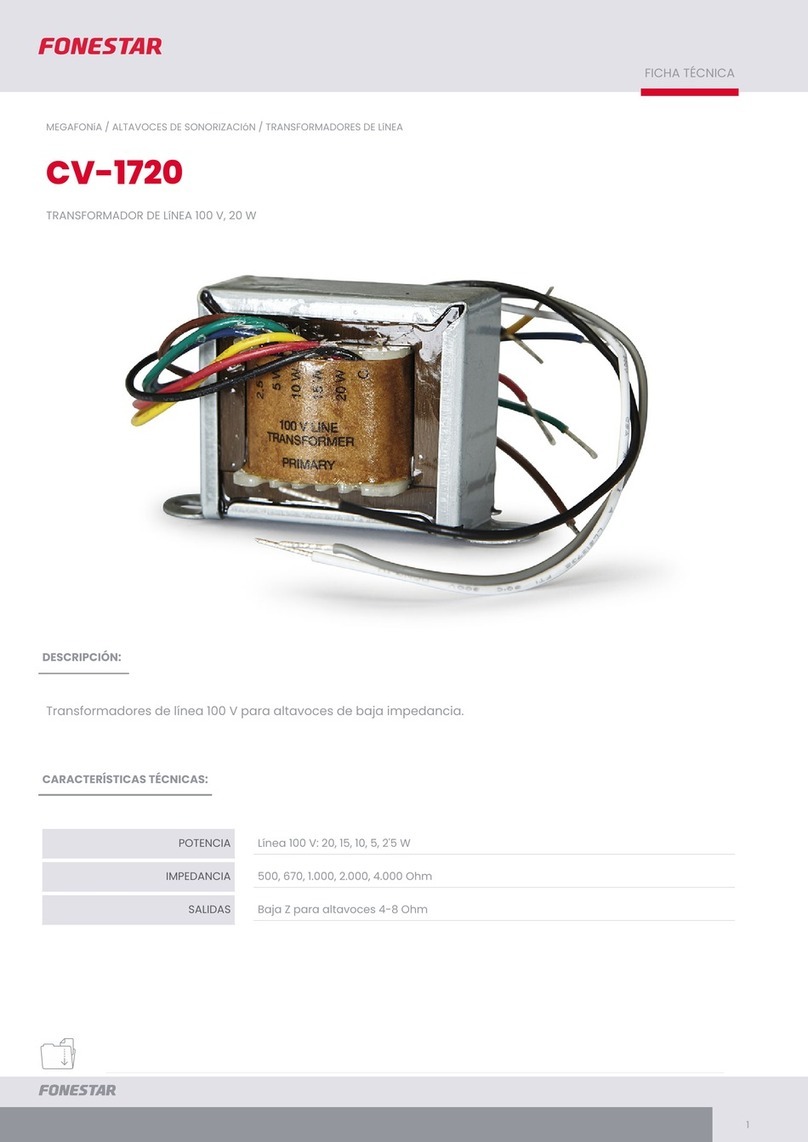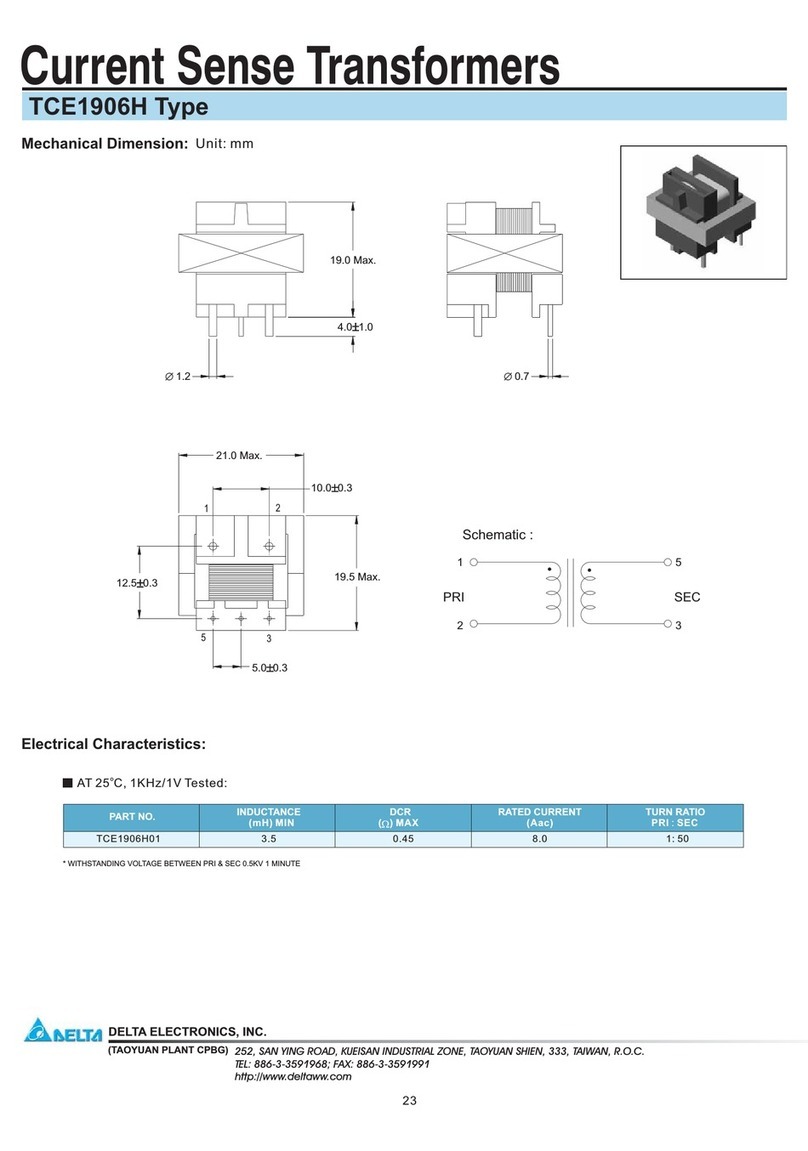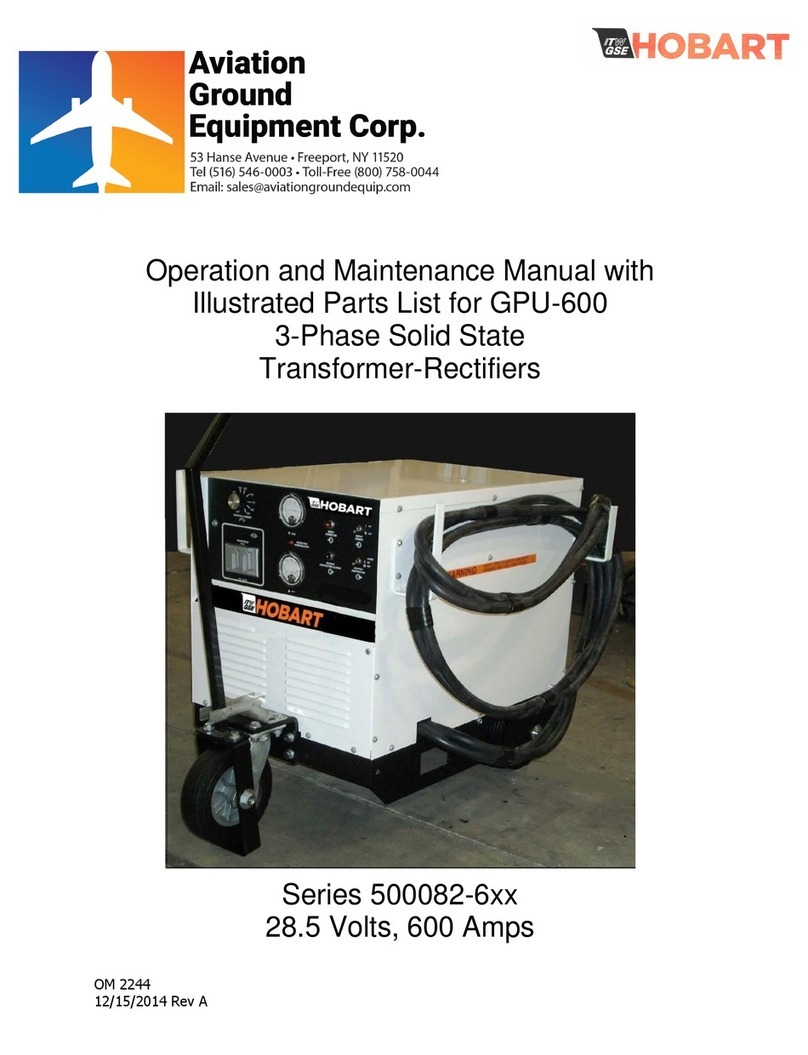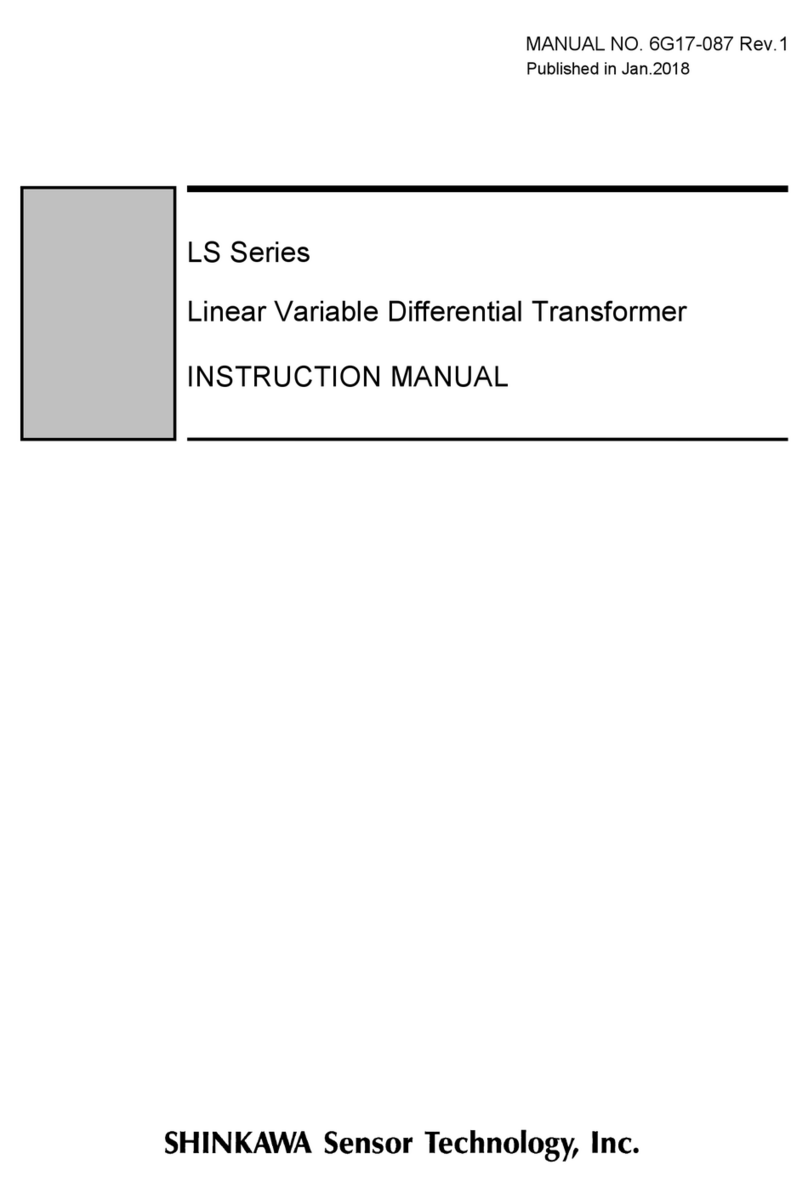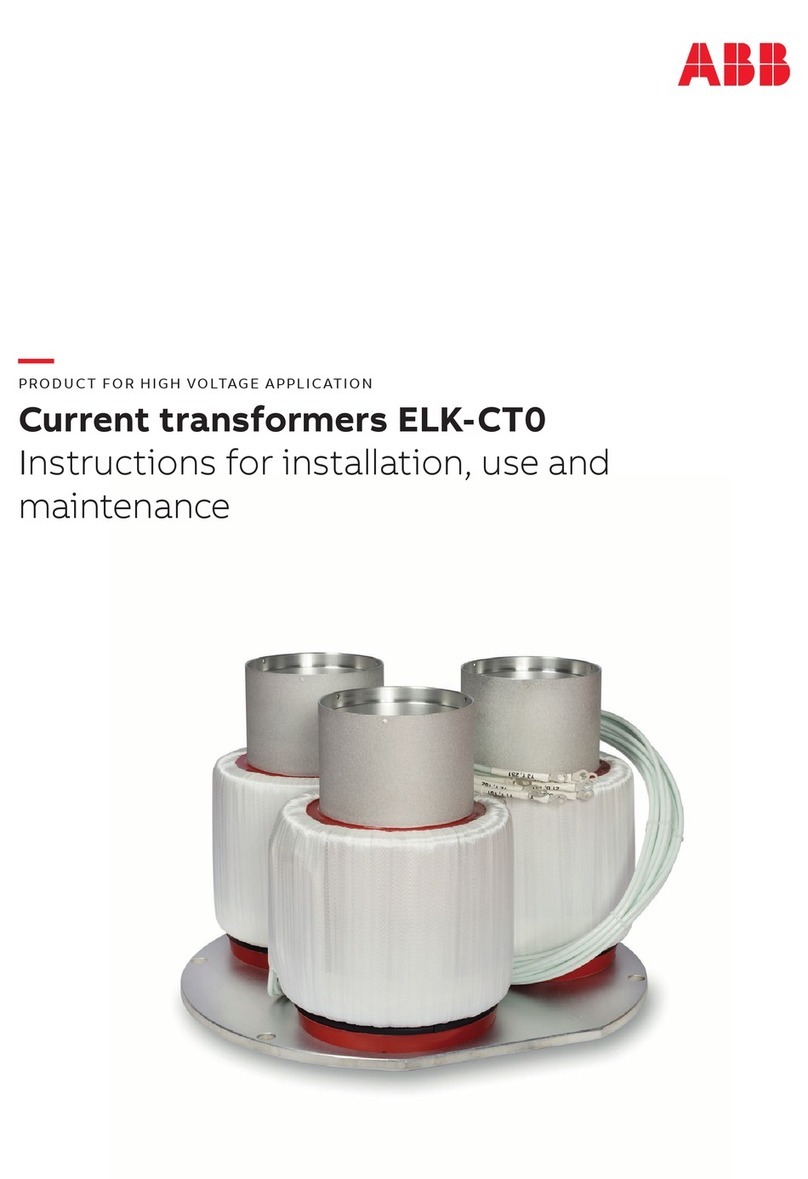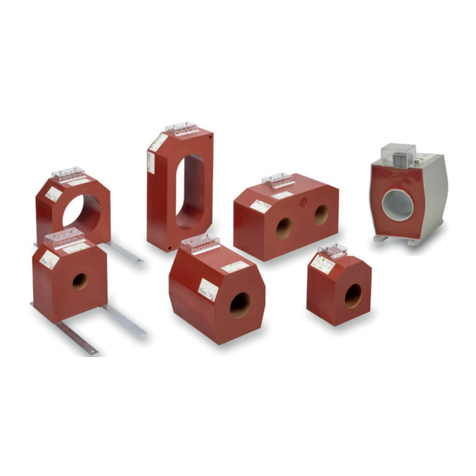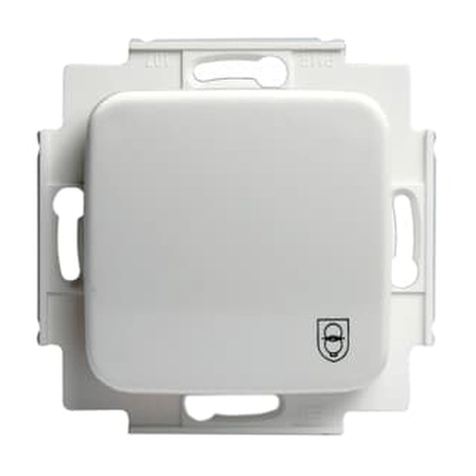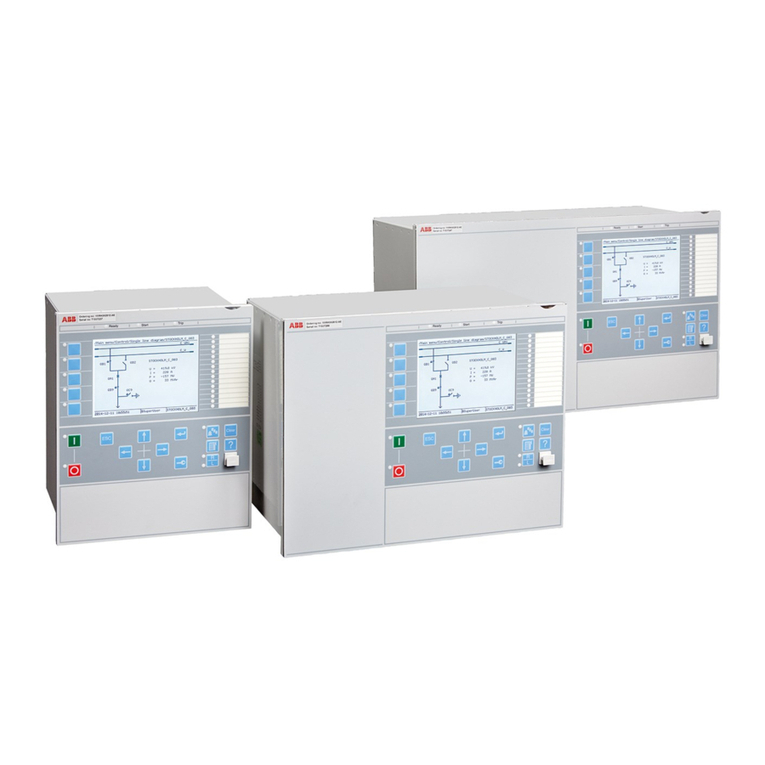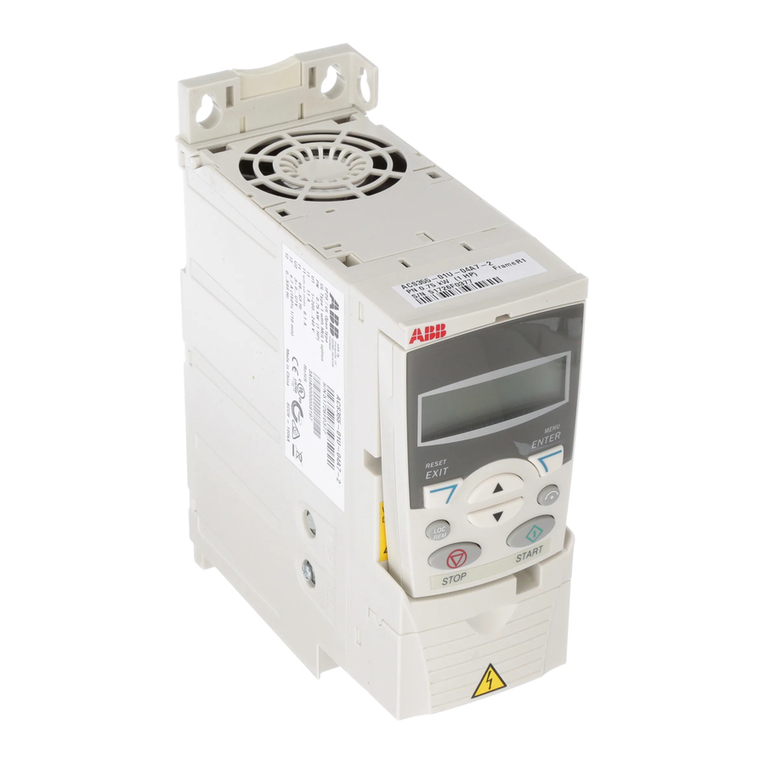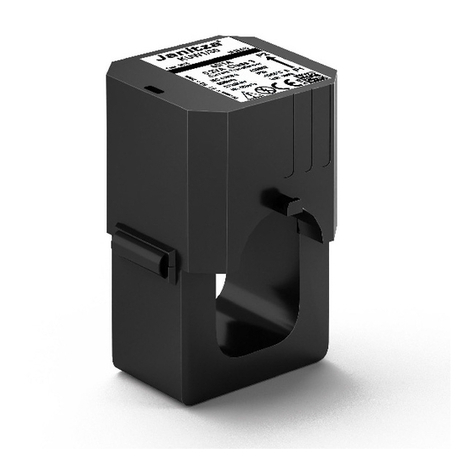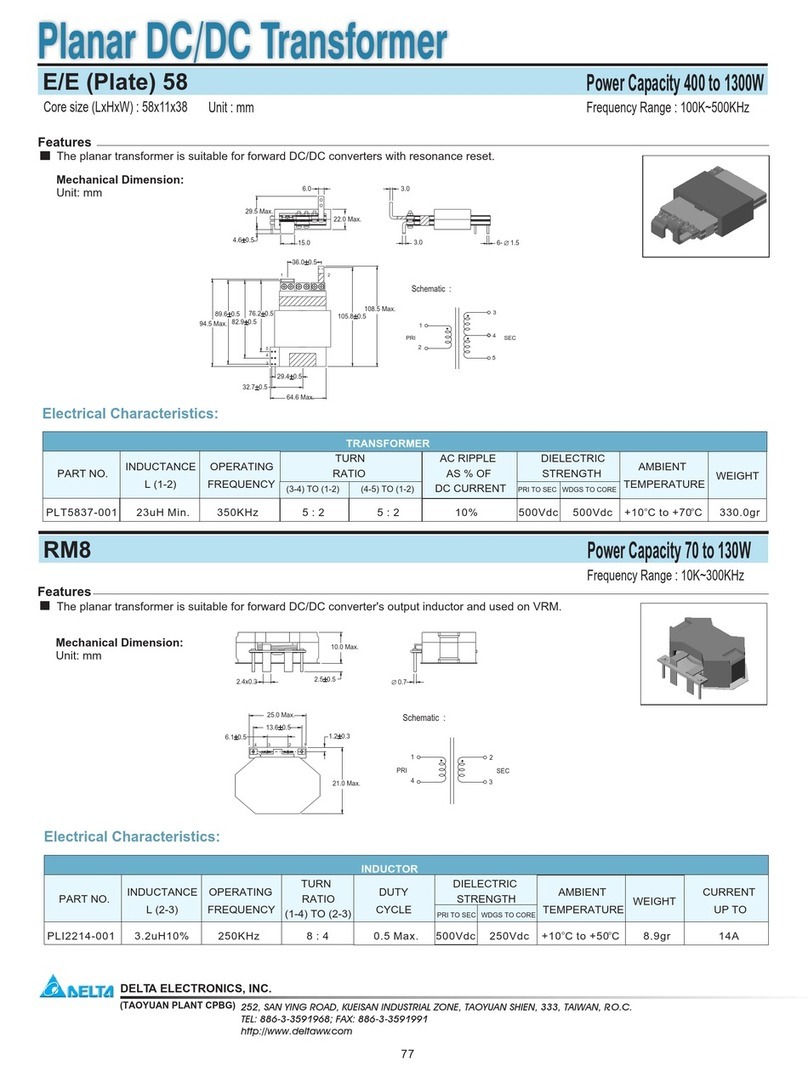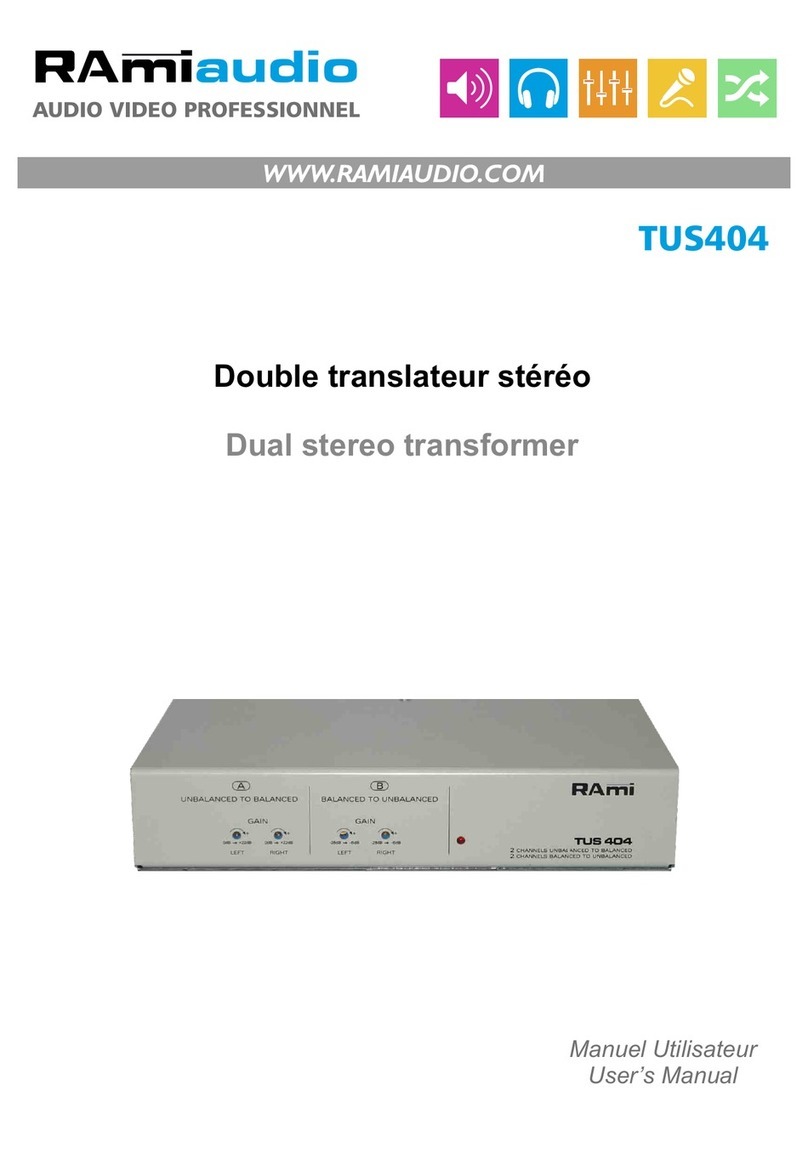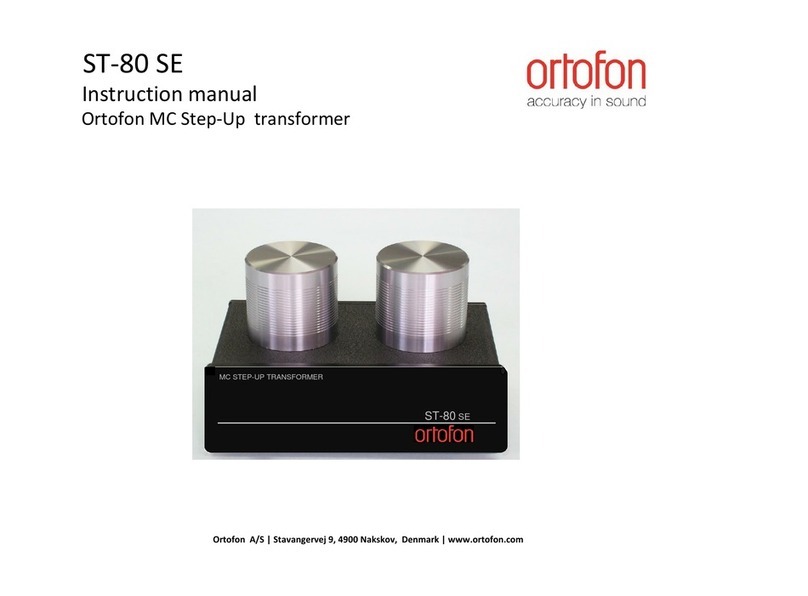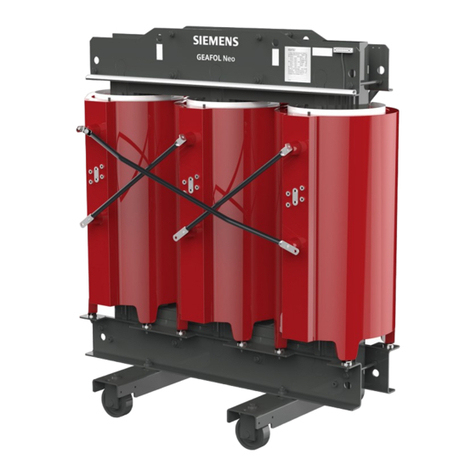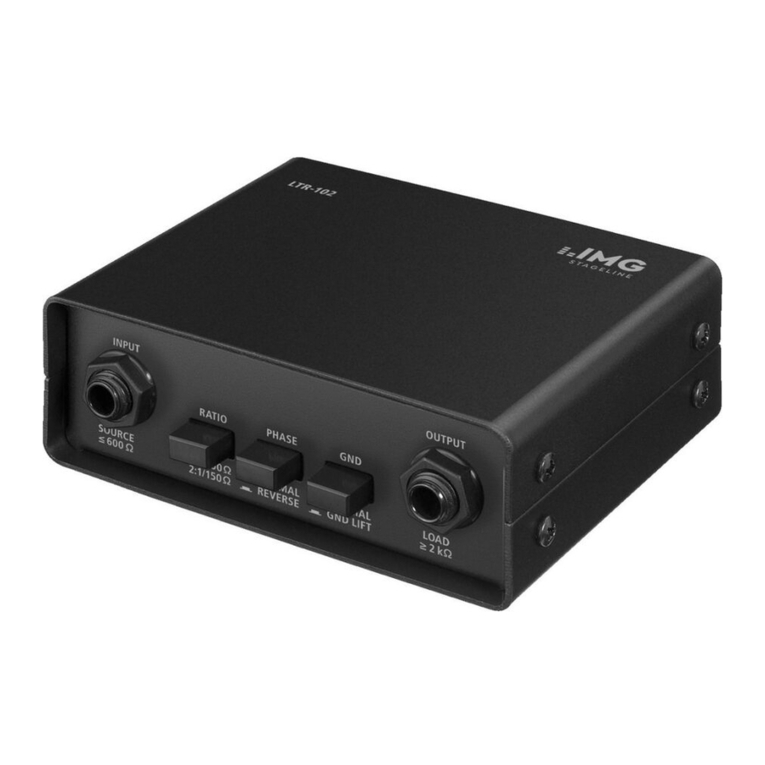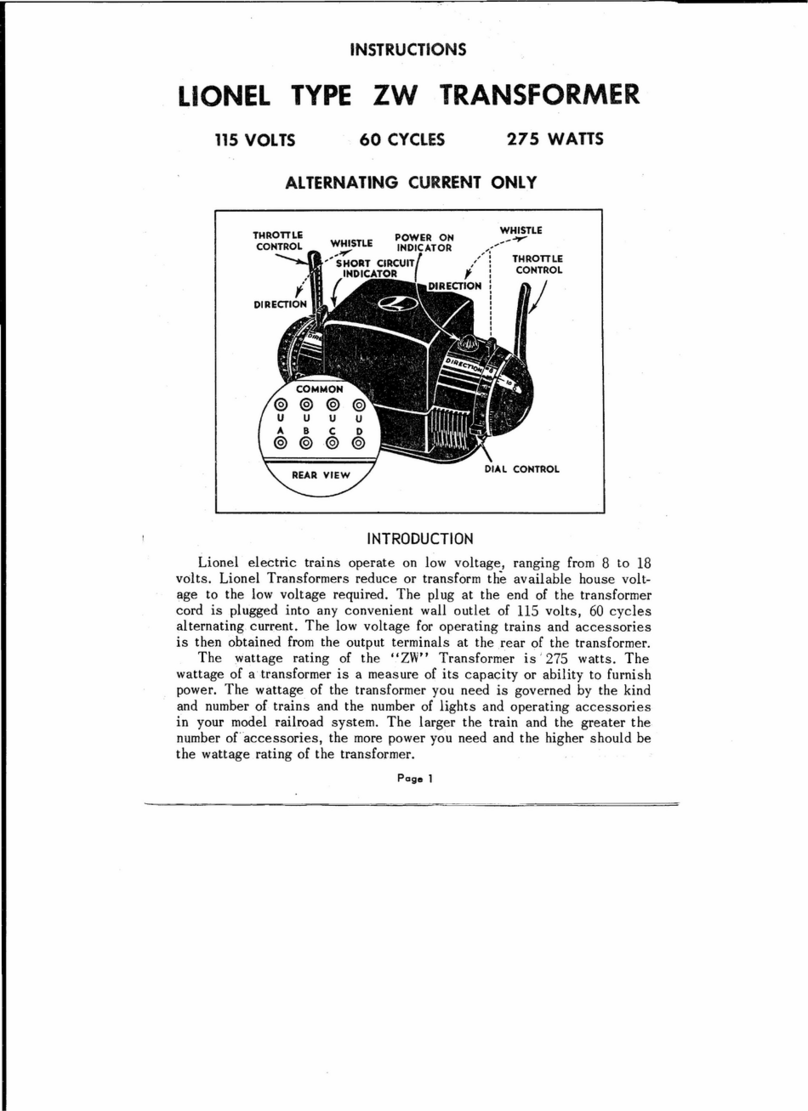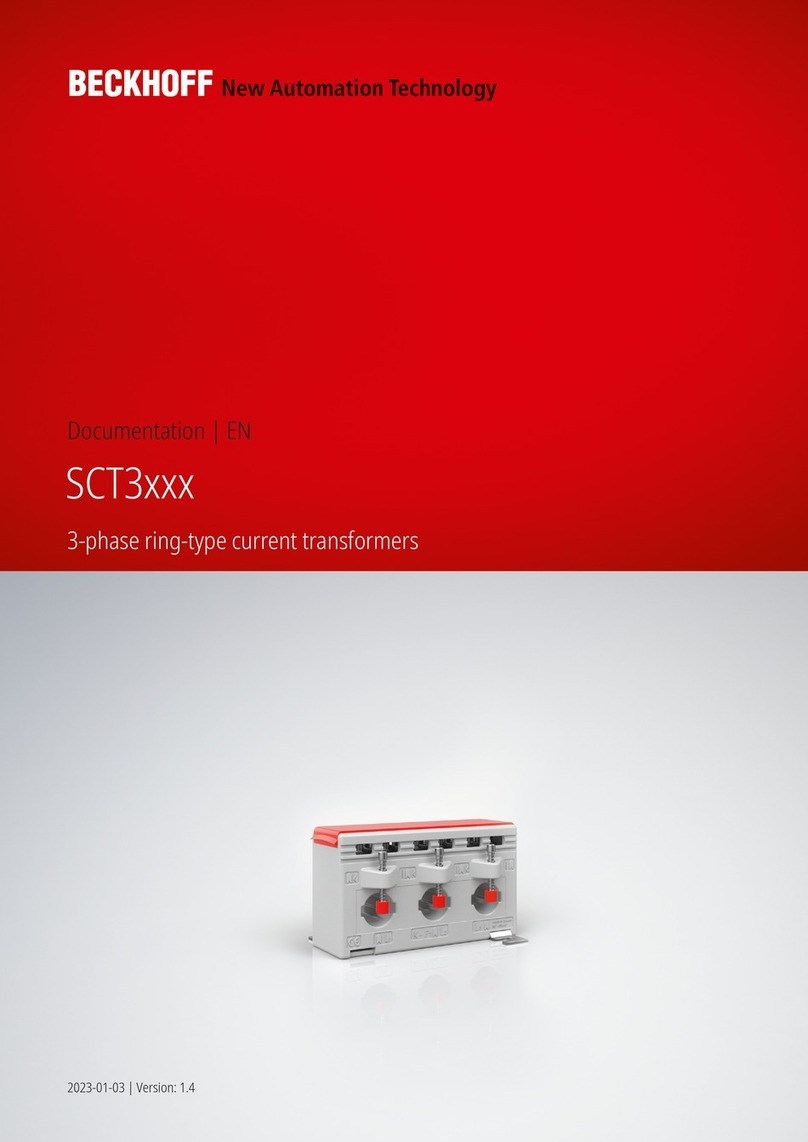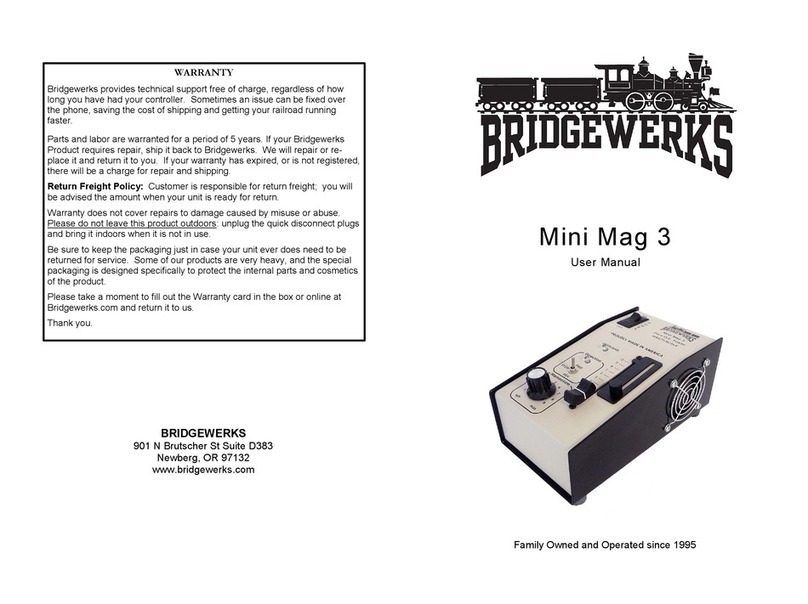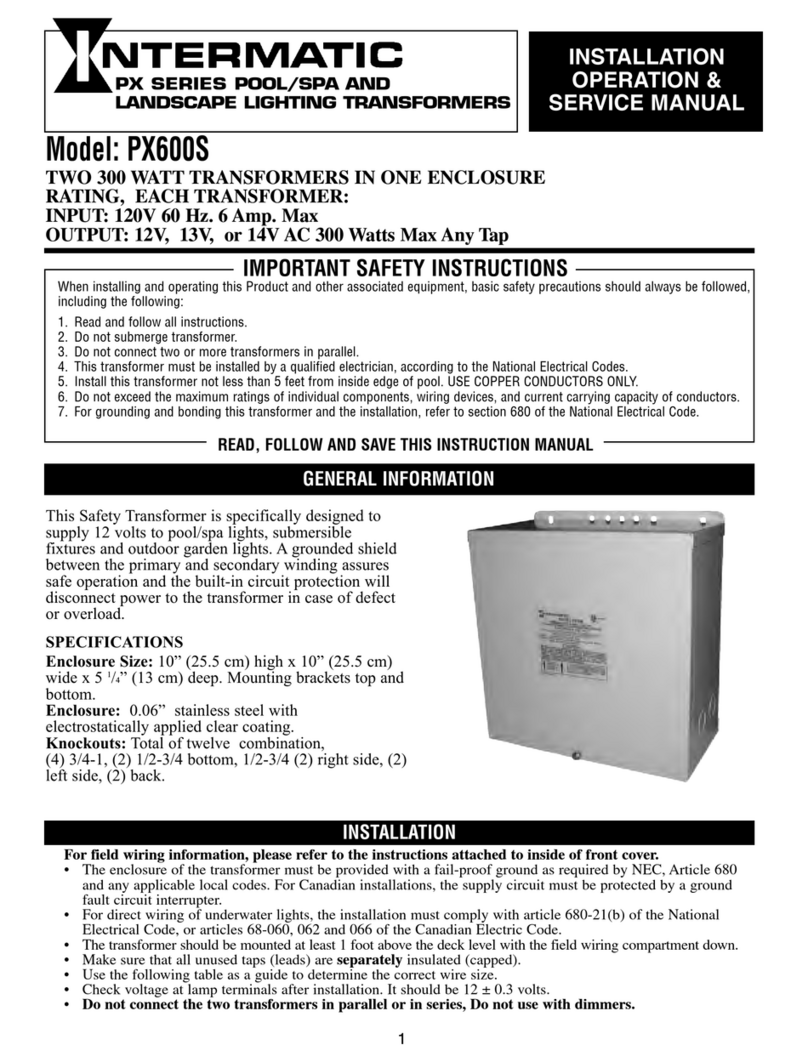
Transformer Terminal RET 541, RET 543, RET 545
1MRS755543
4
Application The RET 541/543/545 transformer terminals
are designed to be used for the protection,
control, measurement and supervision of two-
winding power transformers and generator-
transformer blocks in distribution networks.
RET 54_ terminals can also be used in harsh
environments e.g. in heavy industry, marine
and offshore applications.
The main protection function is three-phase
current differential protection with stabilized
and instantaneous stages for fast and selective
winding short-circuit and interturn protection.
Besides 2nd and 5th harmonic restraints, the
stabilized stage also includes a waveform rec-
ognition-based blocking-deblocking feature.
Reliable operation even with partially saturat-
ed current transformers, that is, short operate
times at faults occurring in the zone to be pro-
tected and high stability at external faults are
achieved. Increased sensitivity can be obtain-
ed by automatic adaptation to the position
changes of the on load tap changer. Interpos-
ing current transformers are not needed: Any
vector group matching and CT ratio correc-
tions in a wide range are numerically imple-
mented as well as zero-sequence current
elimination, which prevents unwanted trips at
earth faults occurring outside the protected
area.
In addition to the differential protection, the
Basic version terminals incorporate the fol-
lowing protections: Restricted earth fault pro-
tection with stabilized numerical or high
impedance principle, unbalance and thermal
overload protections, three phase overcurrent
and non-directional earth fault back-up pro-
tection with definite and IDMT characteris-
tics on both sides of the transformer.
The Multi-version terminals, further includ-
ing overvoltage and undervoltage, residual
overvoltage, underfrequency and overfre-
quency, overexcitation, directional earth-
fault, directional overcurrent and under-
impedance line back-up protections fulfill the
most demanding application requirements.
Enhanced with the optional automatic voltage
regulation function, the RET 54_ terminal
can be applied as a comprehensive integrated
transformer management terminal. The volt-
age regulator can be applied for a single
transformer or for parallel transformers with
Master-Follower, Negative Reactance or
Minimizing Circulating Current principles.
A special control version terminal with volt-
age regulator and control functions can be
applied, when integration of voltage regula-
tion and protection is not allowed.
The graphical configuration tool, based on
the IEC 61131-3 standard, enables easy cre-
ation of application-specific configurations
and MIMIC pictures corresponding to differ-
ent switchgear systems. The process status is
shown on a dynamic large graphical display.
Detailed information, for instance, measured
values, events and application-specific
alarms, are presented in the display views.
The RET 54_ terminals can measure two sets
of three phase currents, phase-to-phase or
phase-to-earth voltages, neutral current,
residual voltage, frequency and power factor.
Active and reactive power is calculated from
the measured currents and voltages. Energy
can be calculated on the basis of the mea-
sured power. The measured values can be
indicated locally and remotely as scaled pri-
mary values.
With the condition monitoring functions the
RET 54_ transformer terminal monitors e.g.
trip circuits, gas pressure of the breaker and
breaker wear and provides scheduled time
intervals for maintenance.
The RTD1 card, available as an option to the
RET 541 and RET 543 terminals, provides
versatile analog inputs enabling e.g. tap posi-
tion supervision of the on load tap changer,
RTD inputs for top and bottom oil tempera-
ture monitoring, and ambient temperature
biasing for accurate thermal overload protec-
tion. The mA outputs allow transfer of any
measurement data e.g. to PLCs.
By means of the graphic HMI display, the
control functions in the transformer terminal
indicate the position of disconnectors, circuit
breakers and tap changer locally. Local con-
trol of these objects is possible via the push
buttons on the front panel of the terminal.
Furthermore, the terminal allows position
information of the objects to be transmitted to
the remote control system. Controllable
objects, such as CBs, can also be opened and
closed over the remote control system.
Supporting a wide range of communication
protocols, including SPA, LON, IEC 60870-
5-103, DNP 3.0 and Modbus RTU/ASCII,
commonly used by utilities and industries, the
terminals are flexibly integrated into different
control systems. Connection to Profibus DP
or IEC 61850 based system is possible via the
interface adapters SPA-ZC 302 or SPA-ZC
400, respectively.
